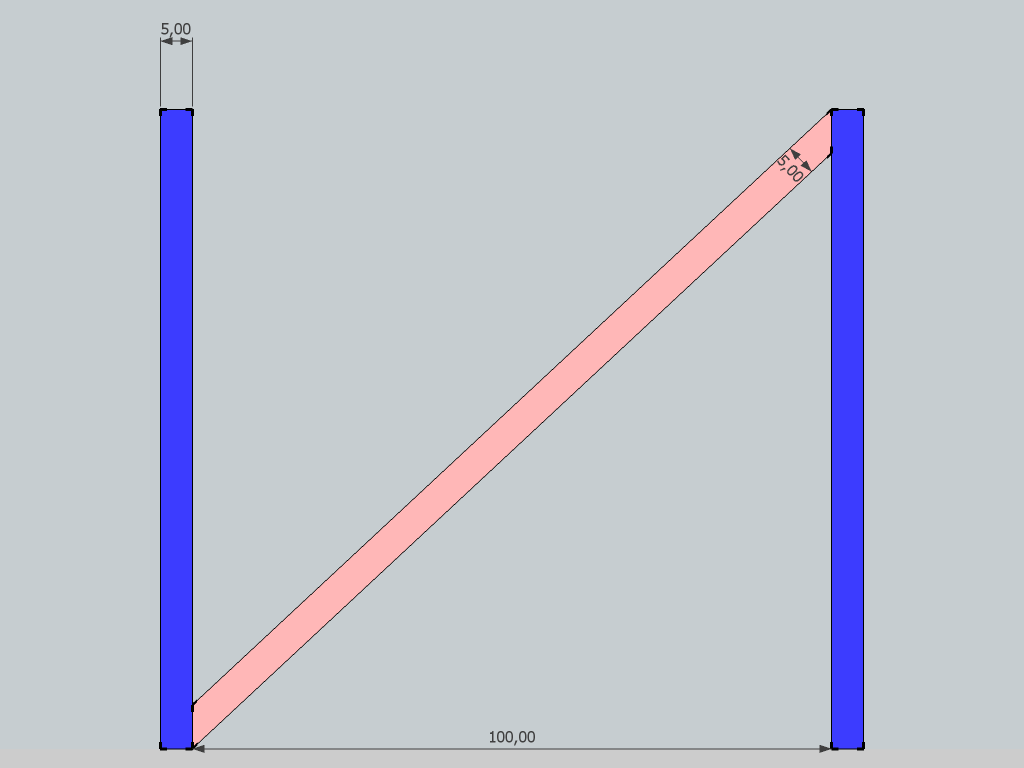Mini-challenge
-
If you measure .5m up and down the verticals, the board is not going to be .5m thick.
-
The desired thickness is .5 meters -- so the first guides are each measured out to .5 meters from the main diagonal (the only one that is obvious and never changes).
So the next Diagonal can be found at intersections at .5 m guide up on the left post and .5 m guide down on the right post -- from there you delete the original guides and connect the diagonals with the line tool.
After that you pull off new guides to .5m from the bottom and top -- which again will give the corrected diagonal at the intersections on the left post and right post... the other diagonal has been known since the beginning(doesn't ever change).
All I used was the line tool, tape measure tool, and push pull.
Best,
Jason. -
@unknownuser said:
@Fredo
Is your frame changing thickness? It does for me
Ooops. I should have read the thread in details.
Then, it just need a dedicated plugin, this won't be a conform transformationFredo
-
It is as I show in the updated file.
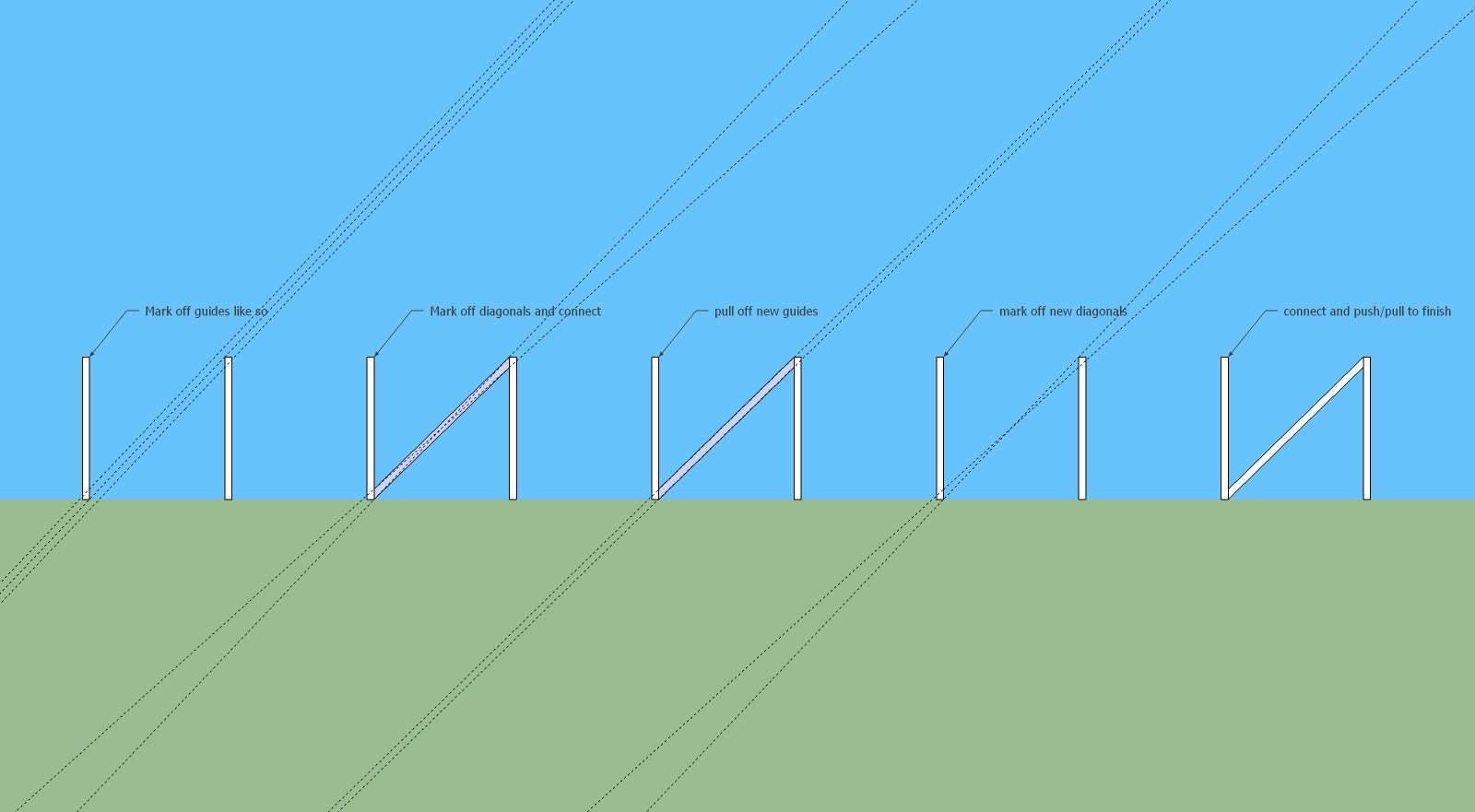
Best,
Jason. -
-
@unknownuser said:
No need to change anything!

With the fredo scale
Just make the rotation on the top of the block!
[attachment=1:1hqifa7e]<!-- ia1 -->yes.jpg<!-- ia1 -->[/attachment:1hqifa7e][attachment=0:1hqifa7e]<!-- ia0 -->yes2.jpg<!-- ia0 -->[/attachment:1hqifa7e]
That changes the width of the board, doesn't it?
-
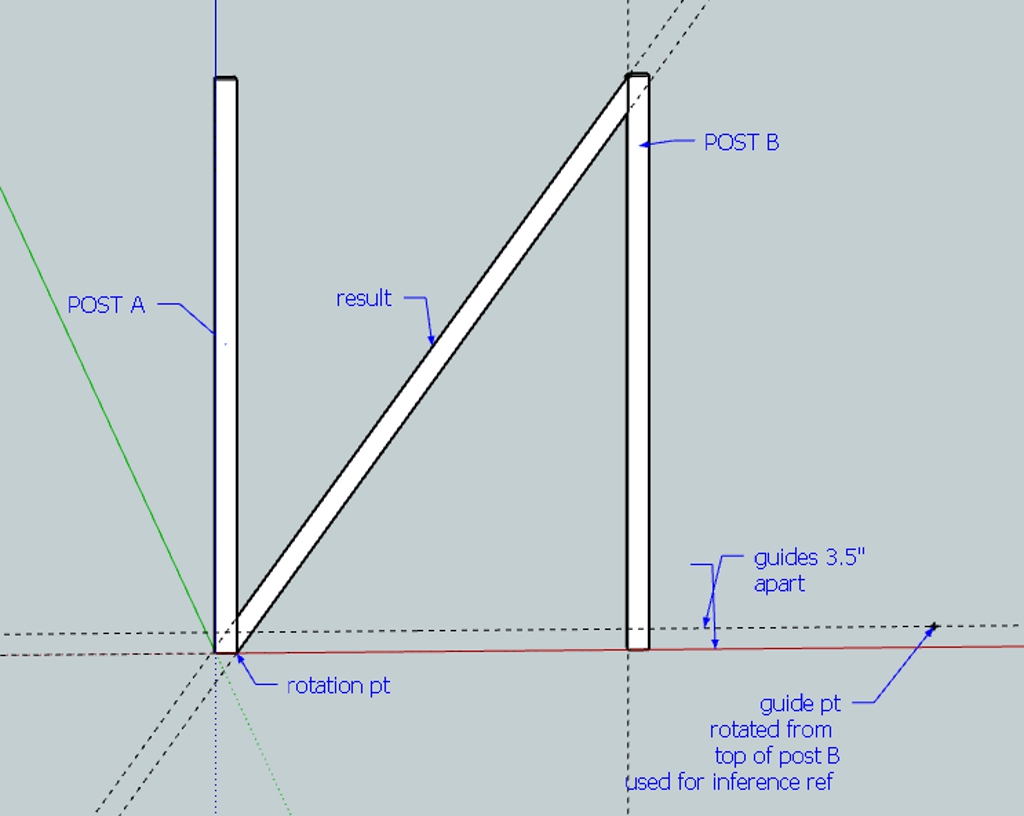
-
No need to change anything!

With the fredo scale Planar Shearing shown previus!
Just make the rotation on the top of the block!
Perfect!

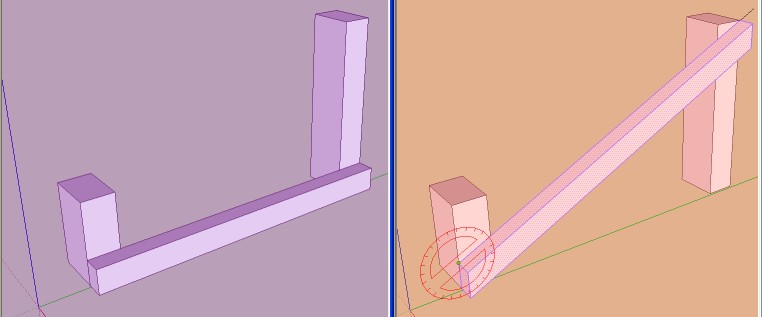
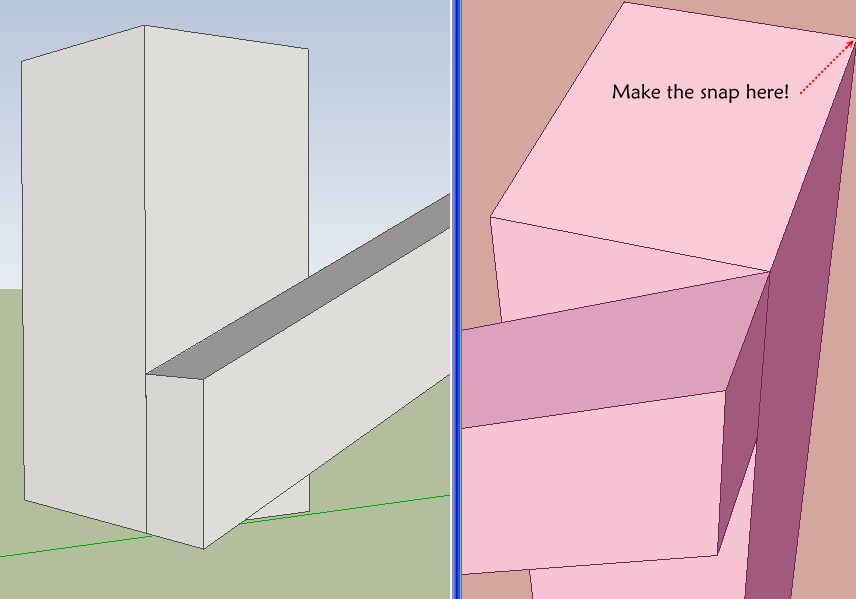
-
When testing I recommend you put the posts further apart as with near square shape deviances might be so small that you think you have a correct solution.
-
Mac1
How do you get the rotated guide pt to snap exactly onto the horizontal top guideline ?
-
@unknownuser said:
That changes the width of the board, doesn't it?
No nothing is changed

You have just to draw the block box to modify on the ground, with any measures (just fit the 2 pilars )
Nno need to push cut anything!
-
Pilou, when I used Fredo's method my board went from 5" wide to 3-1/16" wide. The length of the miter remained at 5", though. I'd say that's a change. Mac1's idea looks interesting.
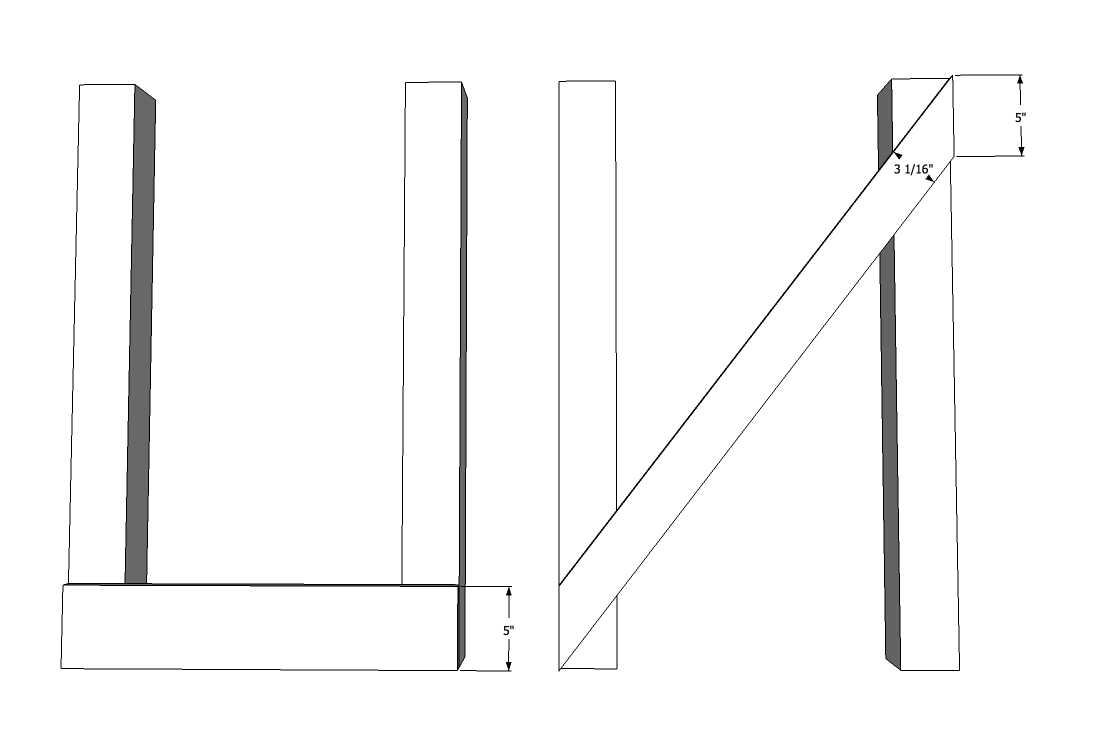
-
-
Absolute accuracy seems to be something that would be pretty easy since we know all of the measurements, including the first diagonal -- I would just rotate a copy of the diagonal around the midpoint to make the second diagonal, thus giving all 4 ending points for the shape... but I would need to calculate the specific degrees for the rotation, and I'm not well versed in that level of math.
Definitely seems a plugin to make this is a need after all... if absolute accuracy is required.
Best,
Jason. -
@gaieus said:
Is this "close enough"?
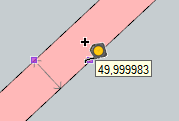
Very close - but surely it should be possible for full accuracy..?
-
I also noticed that if I crank up the decimals, I get an inaccurate measurement for that thickness (although a different one)

Now the very interesting thing is that I did not do any shearing but only worked with the rotate tool. So there could be inaccuracy but then it's Sketchup's tolerance when it merged two endpoints so close that I could see the electrons spinning. But then yes, I was indeed relying on this "tolerance" (just did not know how it will work).
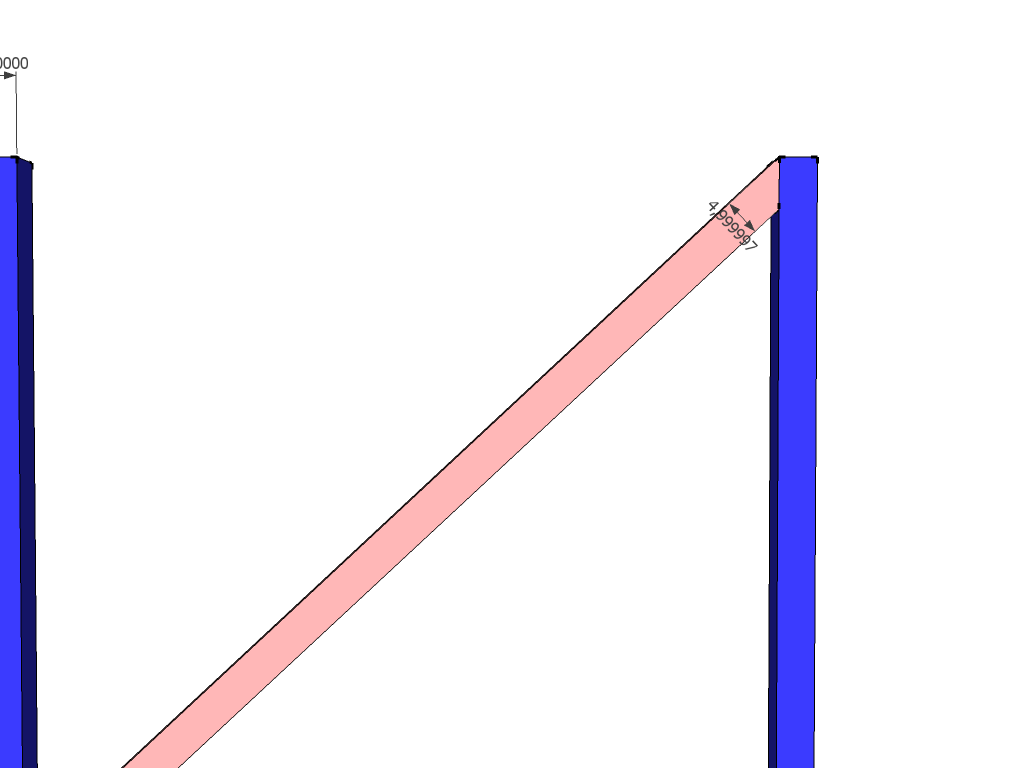
-
@thomthom said:
So how do you calculate it?
the way i calculate it in the DC :

you can find all the info of the hypotenuse (green) in a variety of ways .. (for instance, a^2 + b^2 = c^2 to get its length.. you'll know a & b in this case… then trig for the angles)
that hypotenuse is also the the hypotenuse of the un-trimmed board (red).. so you know the board width and the length of its hypotenuse which means you can get all other angles and lengths..
the rotation of the original hypotenuse minus the long angle of the board's hypotenuse give the correct rotation angle..
here's the DC i use (after i use 'component options' to enter the dimension of height, board width, and the space in between the two poles, i'll then trace the results and copy/paste it into my actual drawing.. not entirely ideal but it works..)
for whatever reason, i still think there might be a way to do it in sketchup itself.. maybe jean L can come up with something

so far, it's looking like true-tangents may be the key.. i haven't tried it yet in this circumstance but i imagine it will work. -
Excellent, Jeff.
-
@unknownuser said:
@ecuadorian said:
@andybot said:
... thus - for best accuracy, draw it in ACAD and import into sketchup

Amen. Trimble, if you're reading this, we need actual arcs and curves in SketchUp.
i'm not quite sure they could give us true arcs in sketchup without entirely changing the way sketchup works.. (how would a cylinder be drawn if there were no segments in the arcs? a nurbs surface? )
what they can give us, i feel, is 'guide arcs' …which would also allow us to rotate this thing and snap it into place very easily.
.
Someone at Trimble is saying "What? There aren't real circles? Oh crap! What have we done?"
-
OK, what's wrong with Mac 1's version. Can the reference point from the tip to tip dimension be accurately placed on the horizontal guideline to give a marker for snap rotation of the board? I think it is the same problem, requiring math calculating length parallel to board tip to tip.
Advertisement
